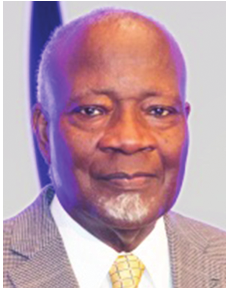PDFLINK |
National Association of Mathematicians, Inc. (NAM) Passing the Torch
A Reflection of NAM’s Development and Growth by NAM’s Leaders/Contributors—the First Five Decades
Communicated by Notices Associate Editor Asamoah Nkwanta
The National Association of Mathematicians, Inc. (NAM) is a nonprofit professional organization in the mathematical sciences with membership open to all persons interested in the mission and purpose of NAM, which are:
- •
Promoting excellence in the mathematical sciences for all Americans, and
- •
Promoting the mathematical development of all underrepresented American minorities, especially African Americans.
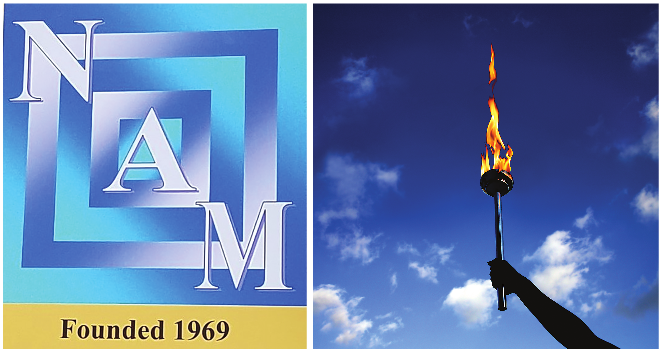
NAM was founded under the principles of inclusivity, diversity, and equity at a time when major American mathematical sciences organizations were excluding underrepresented American mathematicians of color from their membership, editorial boards, research symposia, and other professional activities. NAM continues to promote and encourage inclusivity, diversity, and equity by all mathematical sciences organizations, all institutions of higher learning, and all other arenas and levels where persons are teaching or engaging in the mathematical sciences. NAM is committed to the promotion of equal opportunity and treatment for all NAM members and participants in NAM-sponsored events, regardless of gender, gender identity or expression, race, color, national or ethnic origin, religion or religious belief, age, marital status, sexual orientation, veteran status, or any other reason not related to scientific merit or qualifications. NAM was established in January 1969 by 17 American underrepresented minority mathematicians. These persons would have preferred to be included in the major American mathematical sciences organizations and their activities. Unfortunately, these organizations neither embraced diversity nor exhibited any genuine efforts towards inclusivity and equity. This being the case, NAM Founders and other American underrepresented minorities decided to create other paths to success by establishing parallel organizations, inviting all who agreed with their mission and purpose to become members or at least support their goals. Five decades later, much has been accomplished. However, much more needs to be done. This article presents some of the major accomplishments of NAM during its first five decades by its leaders and major contributors and provides a glimpse of some of their future challenges.
1. The Origin of NAM
An image of King Zulu from which the Zulu Krewe selected its name.
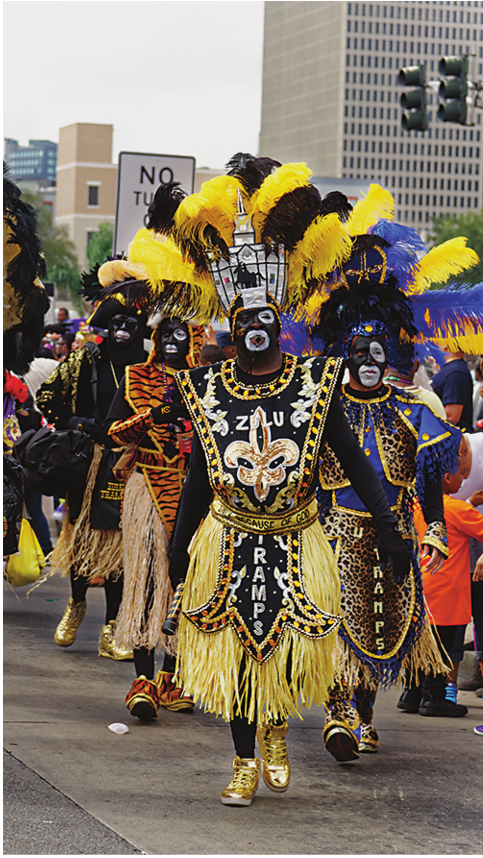
The Eternal Flame of MLK, Jr.
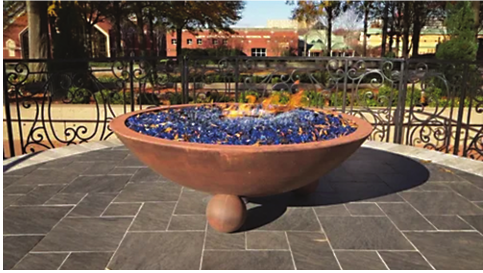
NAM began at the Joint Mathematics Meetings (JMM) in 1969 in New Orleans, Louisiana. This city, known as “the Big Easy,” is also the Mardi Gras capital of the USA. However, due to systemic racism and discrimination, African Americans were not permitted to participate in many of the Mardi Gras activities. As in so many similar situations in the USA, African Americans formed their own organization, the Zulu Krewe, and decided how they would participate in Mardi Gras. The 17 NAM Founders assembled in New Orleans on January 26, 1969. They reflected on the philosophy and vision that was articulated by the Reverend Martin Luther King, Jr., and that the MLK Eternal Flame symbolizes how his tragic assassination in 1968 did not destroy his vision and dreams. Instead, Dr. King’s vision and dreams inspired the Founders to focus on a new future in the mathematical sciences in the USA. They focused on a future of inclusivity, diversity, and equity for all Americans seeking to learn math.
Founders of NAM
- •
James A. Donaldson
- •
Samuel Douglas
- •
Henry Eldridge
- •
Thyrsa Frazier-Svager
- •
Richard Griego
- •
Johnny Houston
- •
Curtis Jefferson
- •
Vivienne Mayes
- •
Theodore Portis
- •
Angelia Rodriquez
- •
Charles Smith
- •
Robert Smith
- •
Beauregard Stubblefield
- •
Henry Taggert
- •
Walter Talbot
- •
Harriett Walton
- •
Scott Williams
The Founders vicariously (mentally and collectively) lit a torch in 1969, but first they did the following:
- •
They shared their experiences about past JMM behaviors toward them, underrepresented American minority mathematicians (UAMM).
- •
They noted the same or similar experiences at JMM 1969.
- •
They discussed the past/present and noted the blatant exclusion of UAMM from anything noteworthy, including speakers, committees, and boards, and including the absence of any historically Black colleges/universities (HBCUs)/minority-serving institutions (MSIs) at any level of involvement.

These discussions led to a “Kujichagulia (self determination) moment,” where a “collective torch” was ignited and the 17 gathered gave birth to NAM! The Founders outlined and initiated some “invigorating actions” that have developed over five decades and will continue for future decades.

2. NAM is a Nationally/Internationally Recognized Professional Organization in the Mathematical Sciences
NAM is a voting member of the Conference Board of the Mathematical Sciences (CBMS), as are AMS, MAA, SIAM, and other nationally recognized mathematical sciences groups. NAM’s operations, programs, and activities are supervised by its Board of Directors, consisting of 12 standing committees (https://www.nam-math.org/governance.html), which function according to the guidelines of NAM’s constitution and bylaws. Governance was established when NAM became incorporated as a nonprofit organization in 1972, early in its first decade, and was modified in later decades.
In 2022, NAM’s programs and activities consisted primarily of the following.
- •
Monthly meetings of NAM’s standing committees.
- •
Monthly meetings of NAM’s Board of Directors.
- •
NAM’s quarterly Newsletter is distributed once each season.
- •
NAM’s winter events: NAM’s National Meeting at the JMM.
- •
NAM’s spring events: NAM’s Faculty Conference on Research and Teaching Excellence (FCRTE) at an HBCU/MSI, which includes NAM’s Albert T. Bharucha-Reid Lecture.
- •
NAM’s summer events: NAM’s David Blackwell Lecture and other items at the Mathematical Association of America summer MathFest.
- •
NAM’s fall events: NAM’s Undergraduate (UG) MATHFest on an HBCU/MSI campus, which includes the J. Ernest Wilkins Lecture.
NAM’s quarterly Newsletter is NAM’s primary method of communicating with its members, friends, and supporters. NAM’s past and current Newsletters are available on NAM’s website nam-math.org.
NAM’s winter events are held at NAM’s National Meeting, in conjunction with the JMM, where NAM is now a partner. Because of NAM’s strong commitments to the principles of diversity, inclusivity, and equity, NAM leaders decided early in its first decade to hold its annual meetings at the same site and at the same time that the JMM is held each January. NAM wanted its members to be able to participate in most of NAM’s National Meeting events as well as attend and participate, when feasible, in the events of other majority mathematical sciences organizations. Moreover, NAM leaders chose the dates and times so that NAM events did not conflict with major events of the majority mathematical sciences organizations. It was NAM’s hope that an impactful number of members of the majority mathematical sciences organizations would attend some of NAM’s events, helping to demonstrate and encourage dual interest in inclusivity, diversity, and equity.
3. NAM’s Winter Events at JMM
- •
William W. S. Claytor–Dudley W. Woodard Lecture (research presentation), named in honor of the research legacies of the third and second African Americans, respectively, known to have earned PhDs in mathematics.
W. W. S. Claytor

D. W. Woodard
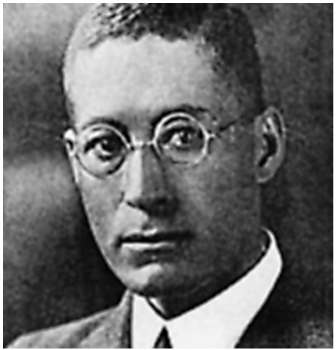
- •
Elbert F. Cox–Walter R. Talbot Address (issues/topics in math/math education), named in honor of the first and fourth African Americans, respectively, known to have earned PhD degrees in mathematics, for their legacies of challenging the system.
Elbert F. Cox

Walter R. Talbot
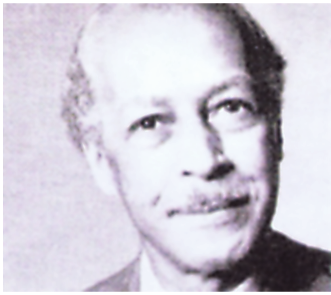
- •
Haynes, Granville, and Browne Presentations by recent PhDs, named in honor of the first three African American women known to have earned their PhDs in mathematics for their legacies teaching and mentoring young African Americans to do graduate study and earn PhDs in mathematics.
Euphemia L. Haynes (1943)
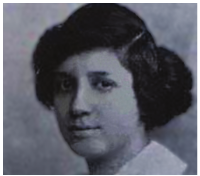
Evelyn B. Granville (1949)
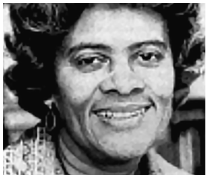
Marjorie L. Browne (1950)

NAM PhD Colloquium speakers at the 2018 Haynes–Granville–Browne Presentation Series.
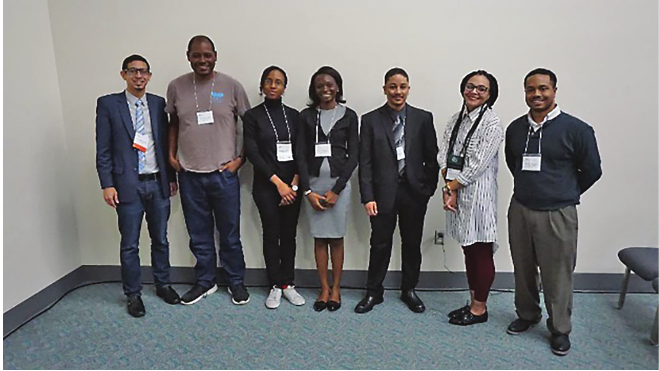
- •
NAM’s one-hour Panel Discussion on a variety of topics.
- •
NAM’s Annual Business Meeting, receiving reports from the Board and taking votes on issues.
- •
NAM’s Annual Banquet (the featured gathering of NAM’s members and friends), which includes NAM’s awards and recognitions listed below.
- –
Lifetime Achievement Award(s), (possibly more than one), which is an award given annually to an underrepresented American mathematician who has exhibited an exemplary career for a period of at least 25 years that is worthy of emulation by younger mathematicians (passing the torch). The award may be given posthumously.
- –
Clarence F. Stephens–Abdulalim A. Shabazz Teaching Excellence Award, which is given annually to minority mathematics professors who seek to emulate their legacies. It includes a monetary prize.
Clarence F. Stephens and Abdulalim A. Shabazz, two of the most highly acclaimed and nationally honored professors of mathematics at the collegiate level who have inspired and produced scores of mathematicians.


4. NAM’s Spring Events
- •
Faculty Conference on Research and Teaching Excellence (FCRTE), held at an HBCU/MSI. This is an annual weekend event for underrepresented minority faculty, which includes presentations by faculty on research topics and/or topics on teaching techniques/issues, as well as a Faculty Panel Discussion on topics such as:
- –
Tutoring and mentoring techniques, the importance of perseverance
- –
Summer opportunities for faculty and students—fellowships/internships
- •
Albert Turner Bharucha-Reid Lecture (at FCRTE). This lecture by an invited speaker is in honor of the legacy of Albert Turner Bharucha-Reid, who was a great teacher and a world-class researcher.
Attendees
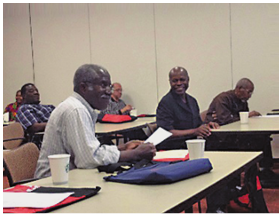
Research/Teaching
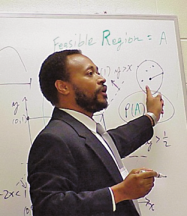
A. T. Bharucha-Reid

5. NAM’s Summer Event at MAA MathFest
NAM’s David Blackwell Lecture was established in 1994, in honor of the legacy of this great professor and distinguished world-class researcher and scholar. In 2019, Johnny L. Houston gave the 25th David Blackwell Lecture. Houston’s presentation was followed by NAM’s 50th anniversary party (sponsored by MAA).
Professor Blackwell lecturing.

J. Houston, 25th David Blackwell Lecture.

Happy 50th Anniversary, NAM.

6. NAM’s Fall Events
- •
Undergraduate MATHFest (UG MATHFest) at an HBCU/MSI is a weekend event (Friday–Sunday) for underrepresented American minority students in the mathematical sciences at the sophomore–senior college level. They are exposed to similar college students, especially from other HBCUs/MSIs. They meet underrepresented American graduate students in the mathematical sciences, graduate faculty from Research I institutions seeking to recruit underrepresented American minority students to pursue graduate degrees, and seasoned underrepresented minority mathematicians who serve as role models for the underrepresented American students attending. This unique gathering can significantly inspire the undergraduate students’ future goals and careers. It is a networking haven of opportunities to learn, participate, and plan one’s future. It exhibits a real sense of diversity, equity, and inclusivity. The students are challenged to be involved.
- •
At UG MATHFest an invited speaker gives the J. Ernest Wilkins Lecture in honor of the legacy of this world-class mathematician who enjoyed inspiring youth to pursue careers in mathematics and other STEM fields. Dr. Wilkins gave the inaugural lecture in 1994.
A typical UG MATHFest attracts at least 75–100 undergraduate attendees.
J. Ernest Wilkins
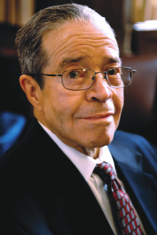

A presenter at UG MATHFest
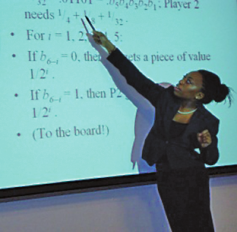
Attendees at a NAM Undergraduate MATHFest.
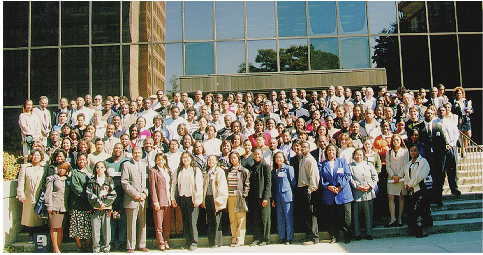
7. An Overview of NAM’s First Four Decades
7.1. First decade, 1969–1979
- •
1969: The founding of NAM.
- •
Founding leaders: Walter R. Talbot, Johnny Houston, Scott Williams.
- •
1970 Executive Committee: Irvine Vance, Chair; Etta Falconer, Secretary; Benjamin Martin, Articles of Incorporation/Constitution-ByLaws.
- •
Presidents elected during NAM’s first decade:
- –
Frank James, 1971–1973
- –
Theodore Sykes, 1973–1975
- –
Japheth Hall, 1975–1976
- –
Samuel Douglas, 1977–1983
- •
1971: NAM’s first Annual Meeting Research Presentation, by Rogers J. Newman.
- •
1972: NAM incorporated in the state of Georgia, after adoption of constitution/bylaws.
- •
1973: NAM’s first Annual Business Meeting and Annual Panel established.
- •
1974: NAM’s national office established in Atlanta.
- •
1975: NAM began having its National Meetings at JMM.
- •
1975: NAM selected Johnny L. Houston as its first Executive Secretary.
- •
1979: NAM’s tenth anniversary celebrated in Boulder, Colorado, supported with NAM’s first grant, from NOAA, secured by Beauregard Stubblefield (who worked at NOAA), one of NAM’s Founders.
7.2. Second decade, 1980–1989
- •
NAM’s National Meetings grew in complexity and attendance.
- •
1980: NAM’s Claytor–Woodard Lecture was established by President Samuel H. Douglas and Executive Secretary Johnny L. Houston.
- •
1980: NAM’s Cox–Talbot Address was established by President Samuel H. Douglas and Executive Secretary Johnny L. Houston. Professor J. Arthur Jones, Florida A & M University, gave the inaugural lecture.
- •
1981: NAM produced and published the first NAM proceedings.
- •
1984: Rogers J. Newman was elected NAM’s fifth President.
- •
Distinguished Speakers who gave the Claytor–Woodard Lecture in the second decade:
- –
1984: Professor David H. Blackwell
- –
1985: Professor Albert Turner Bharucha-Reid
- –
1986: Professor J. Ernest Wilkins
- •
The following Board members were elected: Sylvia T. Bozeman, Vice President; Harriett Walton (serving more than a decade), Secretary-Treasurer; James Donaldson, Newsletter Editor.
7.3. Third decade, 1990–1999
- •
NAM Undergraduate MATHFest (UG MATHFest) was established in 1992 as a NAM activity under the leadership of NAM’s fifth President, Rogers J. Newman (1984–1994) and Executive Secretary Johnny L. Houston (1975–2000). Professor Aderemi O. Kuku was UG MATHFest 1992 Invited Distinguished Speaker.
- •
The following NAM annual major events and signature programs were established under the leadership of NAM’s sixth President, John W. (Jack) Alexander (1994–2004) and Executive Secretary Johnny L. Houston.
- –
Annual Faculty Conference on Research and Teaching Excellence (FCRTE)
- –
The Albert Turner Bharucha-Reid Lecture (at FCRTE), 1994
- –
The David Blackwell Lecture at MAA summer MathFest, 1994
- –
The J. Ernest Wilkins Lecture at NAM’s UG MATHFest, 1994
- –
NAM’s Lifetime Achievement Award, 1994
- •
NAM’s Executive Secretary, Johnny L. Houston, began a quarterly column in NAM’s Newsletter titled “Spotlight on a Mathematician,” containing a one-page biography of an African American mathematician. Altogether, it provided over 25 biographies.
7.4. Fourth decade, 2000–2009
- •
During this decade, NAM’s expanded programs, lecture series, and annual activities led to more joint-venture activities within the mathematical sciences community.
- •
NAM’s seventh President, Nathaniel (Nate) Dean (2004–2014), Executive Secretary, Leon Woodson, and Vice President, Dawn Lott obtained grant funds to enhance programs and activities, and initiated joint-venture activities that further expanded NAM’s influence. Dean’s background in the mathematical sciences inspired more NAM involvement with research, producing PhD students, and participation with corporate America.
- •
It was at the beginning of this decade that Johnny L. Houston retired as NAM’s Executive Secretary after 25 years of service (1975–2000). Houston was selected to be Executive Secretary Emeritus by NAM’s general membership and to be an Ex-Officio Member on the NAM Board. Houston wrote a book, The History of NAM, 1969–1999, in 2000. Johnny L. Houston is the only NAM member who has served as an active member starting as one of its Founders in 1969, through 2022 and counting, as well as being on the NAM Board of Directors for 48 years.
8. Three NAM Presidents Who Served Ten Years
All of NAM’s leaders and major contributors who helped “pass the torch” contributed immensely to NAM’s development and growth. Particularly impactful were three who served as President of NAM for ten years each. We now present a detailed biography of each.
8.1. Legacy of Rogers Joseph Newman (1926–2016)
“My first JMM meeting was the one held in Washington, DC in January 1961. I had just picked up my degree from the University of Michigan. I wanted to know more about this JMM meeting of which so many Michigan professors had discussed” —R. J. Newman, 1994.
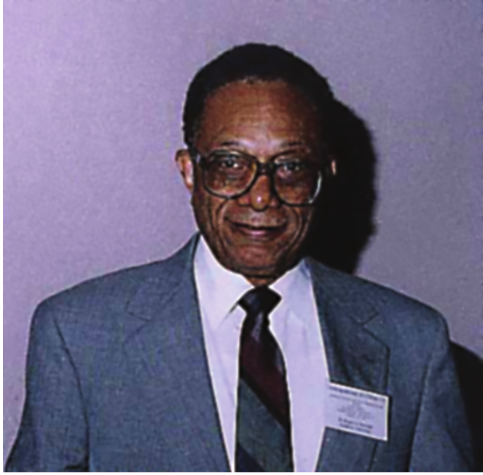
Rogers J. Newman was born in Ramar, near Montgomery, Alabama, on December 22, 1926, as the only child of Jonathan Newman, a farmer and insurance agent, and Vera Primos Newman, a school principal. He married Dorothy Alice Willis. They had three sons: Rogers Joseph, Jr., Roy Oliver, and Robert Marion. He passed at 89 on January 9, 2016.
Newman received his high school diploma from Alabama State College Laboratory School (Montgomery). He enrolled in Morehouse College in Atlanta, Georgia, in 1944, earning a BA degree in mathematics in 1948; Martin Luther King, Jr., was in his graduation class. Immediately following graduation, he enrolled at Atlanta University (now Clark Atlanta University), earning an MA degree in mathematics in 1949. Newman began his illustrious teaching career at Bishop College in Marshall, Texas (1949–1950). In January 1961, he received his PhD in mathematics from the University of Michigan in complex variables. He did further formal studies at Imperial College, London (1970–1971) and at Louisiana State University (summer 1970, summer 1971).
During his career of more than 40 years, Professor Newman taught and influenced scores of established mathematicians. His list of students who earned doctorates includes Delores Spikes, Stella Ashford, Juanita Bates, Roosevelt Calbert, and Preston Dinkins. He was selected as a Danforth Teacher (1995) and Teacher of the Year (1981). He produced several publications and made a number of scholarly presentations. He was active in several organizations, but foremost he was a distinguished leader of NAM—President (1984–1994)—and he marketed NAM to all areas of the mathematical sciences community. He gave NAM’s first scholarly presentation at a NAM National Meeting (1971). He helped to enhance NAM’s National Meetings with quality presentations. He engaged more HBCUs to participate in NAM annually. He and Executive Secretary Houston established NAM’s UG MATHFest in 1992. He was active with the MAA Board of Governors (1986–1989), as well as with the AMS, NSF, and Math Reviews. He received NAM’s Distinguished Service Award (1994) and other awards/honors. He will be forever remembered by those who know NAM’s history.
8.2. Legacy of John W. Alexander (1938–2022)
John W. (Jack) Alexander, Jr., was born May 17, 1938, in Salem, Ohio. He passed January 13, 2022, in Miami, Florida, at the age of 83. Dr. Alexander was a very scholarly individual, having earned five degrees in higher education. He earned a BS in mathematics (1961, Boston University); an MA in mathematics (1965, Bowling Green State University); an EdD in mathematics education (1985, Boston University); an MBA (1987, California Coast University [CCU]); and a PhD in management science/operation research (1989, CCU). He retired as a Professor of Mathematics at Miami Dade College in 2020.
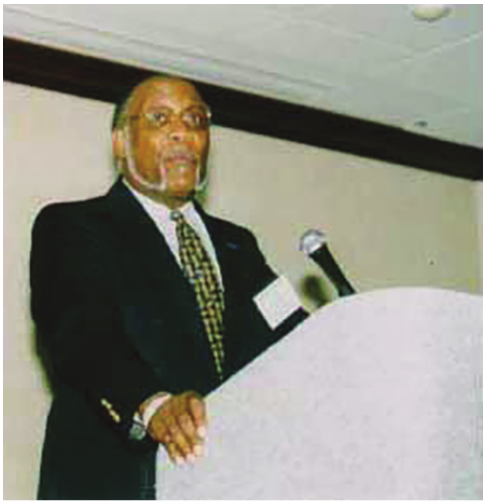
Dr. Alexander’s interest in the broad applications of numerical knowledge is reflected by the diversity of his professional positions and activities. His professional positions included: Mathematics Consulting Director to the West African Regional Mathematics Program of the State Department (1970–1977); Actuary for Connecticut Mutual Life Insurance Co. (1978–1981); Chief Statistician, Futures Group Think Tank, Glastonbury, Connecticut (1981–1982); Associate Professor, Wentworth Institute of Technology (1982) and later Dean of the College of Arts & Sciences (1984–1990); and faculty member at the University of the District of Columbia (1990–1997) where he served a term as Mathematics Department Chair. Later he served as Staff Officer and Research Mathematician for the Board on Mathematical Sciences (1995–1996) and Director of the Board (1996–1997) at the National Academy of Sciences. He returned to academia as Professor of Mathematics at Atlanta Metropolitan College and Spelman College (1998–2002) and ended his academic career as Professor of Mathematics at Miami Dade College (2002–2020).
Dr. Alexander had a long and distinguished relationship with NAM. In 1992, Dr. Alexander was elected to NAM’s Board of Directors as Vice President. Later he served a productive ten-year term as President of NAM (1994–2004). At the beginning of his presidency, NAM celebrated its 25th anniversary year, during which the Board examined its past activities and made future plans. The Board then charged President Alexander and Executive Secretary Johnny Houston with critically reviewing the ideas that had emerged and proposing plans to guide the organization’s activities for the next 5–25 years. The major elements of the 1994 Alexander–Houston Proposal, which were adopted by the Board, included: a five-year Strategic Plan; establishment of an annual Regional Faculty Conference with a Bharucha-Reid Lecture; establishment of named lectures for notable mathematicians David Blackwell and J. Ernest Wilkins, Jr.; establishment of the annual Haynes–Granville–Browne Recent PhDs Presentations; creation of the NAM Lifetime Achievement Award; and upgrading NAM’s Newsletter. In 2004, Dr. Alexander received the NAM Lifetime Achievement Award in recognition of his extraordinary leadership and service to NAM. Dr. Alexander was a master teacher of mathematics, a visionary of ideas for the use of mathematics, and an effective and impactful leader of NAM. He will be forever remembered by those who know NAM’s history.
8.3. Legacy of Nathaniel Dean (1956–2021)
Nathaniel (Nate) Dean, an American mathematician and educator who made significant contributions to abstract and algorithmic graph theory, as well as data visualization and parallel computing, was born in Mississippi on January 9, 1956, and passed in Texas on February 18, 2021. He received a BS in mathematics and physics from Mississippi State University (1978), an MS in applied mathematics from Northeastern University (1983), and a PhD in mathematics from Vanderbilt University (1987).
He had a stellar career in both industry and higher education. After receiving his PhD in graph theory in 1987, Dean worked for 11 years in the Software Production Research Department of Bell Laboratories, producing over 30 scientific publications. In 1997, he received the President’s Silver Award from Bell Labs. In 1998, Dr. Dean became an Associate Professor of Computational and Applied Mathematics at Rice University. While at Rice, he supervised four PhD students with thesis topics ranging from algorithmic graph theory to biological computing. In 2003, he moved from Rice to Texas Southern University (TSU), becoming a Full Professor and Chair of Mathematics. He also served as Director of an NIH Computational Research Laboratory at TSU. Dean’s departure to Texas State University (TX-St) occurred in 2006. At TX-St he supervised his fifth PhD student and served as Chair of the mathematics department for several years. He was highly respected by faculty and by students. He retired in 2016, following the last active years of his career.

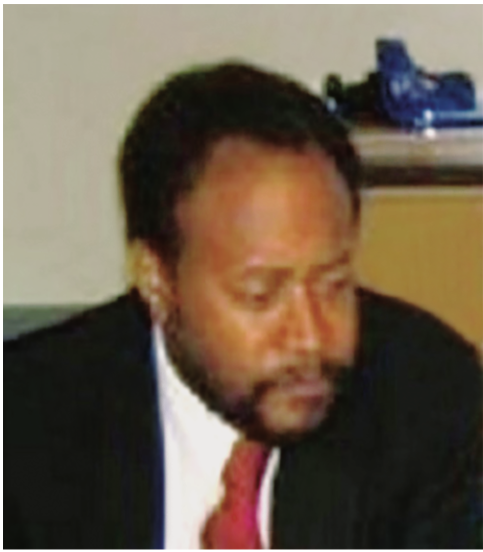
Dean’s research focused on creating mathematical models of complex systems and developing computer tools to visualize, design, and analyze such systems. His research areas included discrete mathematics, optimization, data mining, and network visualization. He produced over 60 publications in these fields, and some of his work in data mining was highlighted in the PBS television series Life by the Numbers (1998), including data mining software that he had developed to teach discrete mathematics at the K–12 level. Dean posed a conjecture to the second neighborhood problem in 1995 which led to progress. The problem is still open (2021).
Dean also worked on mathematics education and outreach throughout his career. He was always recruiting students (especially underrepresented American minorities) to study mathematics. One of his aims was to help address the issue of the very low numbers of underrepresented American minorities in the workforce in the mathematical sciences.
Dean became Vice President of NAM (2001) and served as President (2004–2014), leading NAM with excellence. He served as an Associate Editor of the Notices (AMS) and served on the Board of Governors (MAA). He was Managing Editor of the Journal of Graph Theory, co-organizer of several mathematics conferences, and served as Editor of four volumes for the AMS: Computational Support for Discrete Mathematics, African Americans in Mathematics I and II, and Robust Communication Networks. He was active with SIAM and with CAARMS. He received several recognitions for his achievements and outreach, including NAM’s Lifetime Achievement Award, and was recognized as a great graph theorist. He held a 2nd-degree black belt in martial arts. He enhanced many aspects of NAM’s programs and activities. He will be forever missed by those who know the history of NAM.
9. Fifth Decade, 2010–2019
Under NAM’s eighth President, Edray Goins (2015–2020), a younger generation received/passed the torch. Here is what they did.
- •
Improved NAM’s website and database.
- •
Marketed NAM’s image with merchandise.
- •
Increased collaboration with other mathematical sciences organizations.
- •
Established the Clarence F. Stephens–Abdulalim A. Shabazz Teaching Award.
- •
Renamed the Executive Secretary position to that of Executive Director.
- •
Attracted a diverse group of younger mathematicians to the membership/Board.
- •
Established NAM’s Historical and Archival Committee (HAC), an ad hoc subcommittee under NAM’s Publication Committee, with Johnny L. Houston as Chair and Sylvia T. Bozeman as Vice Chair. Robert W. Woodruff Library and Research Center (Atlanta U. Center) was selected as NAM’s physical repository for HAC.
- •
Developed Attendees/Network Directories that were distributed at UG MATHFest.
- •
Launched NAM’s second endowment campaign.
- •
Organized NAM’s 50th Anniversary Celebration and AMS published Contemporary Mathematics 759: The Golden Anniversary of NAM.
- •
Leon Woodson, Executive Secretary, passed the torch to Leona Harris, NAM’s first Executive Director.
- •
Talithia Washington, Vice President, passed the torch to Naomi Cameron, Vice President.
- •
Roselyn Williams, Treasurer, passed the torch to Cory Colbert, Treasurer.
Omayra Ortega became NAM’s ninth President and first female President in 2021. She had previously been NAM’s Newsletter Editor for several years.
NAM current Board of Directors, 2021–2022
- •
Omayra Ortega, President
- •
Rhonda Fitzgerald, Vice President
- •
Aris Winger, Executive Director
- •
Cory Colbert, Treasurer
- •
Shea Burns, Secretary
- •
Haydee Lindo, Newsletter Editor
- •
Johnny Houston, Executive Secretary Emeritus, Ex Officio Member
- •
Chinenye Ofodile, Region A Member
- •
Terrence Blackman, Region B Member
- •
Brittany Mosley, Region C Member
- •
Brett Jefferson, Outside of Academia Member
- •
Robin Wilson, Majority Institution Member
- •
Karen Taylor, Community College Member
This Board conducted all NAM programs and activities virtually during Covid (2020–2021). They have conducted in-person programs and activities since 2022. In 2022, NAM received grant funds to support UG MATHFest in-person for 2022 and 2023.
10. Challenges, Solutions, and Honoring Our History
10.1. The NAM challenge
According to the Pew Research Center, in America, the White, non-Hispanic population, which was 199 million in 2005, will grow to 207 million in 2050, a 4% increase. In 2050, 47% of the US population will be non-Hispanic White, compared with 67% in 2005. The Hispanic population, which was 42 million in 2005, will rise to 128 million in 2050, tripling in size. Latinos will be 29% of the population, compared with 14% in 2005. The Black population, which was 38 million in 2005, will grow to 59 million in 2050, a rise of 56%. In 2050, the nation’s population will be 13.4% Black, compared with 12.8% in 2005. The Asian population, which was 14 million in 2005, will grow to 41 million in 2050, nearly tripling in size. In 2050, the nation’s population will be 9% Asian, compared with 5% in 2005.
Thus, the Black population is projected to remain 13% of the US population from 2005 until 2050! From 2005 to 2020, only around 2% of the Americans who earned a PhD in mathematics, annually, were Black! What is required to get the percentage of Black PhDs earned annually in mathematics to be near 10% by 2050?
10.2. Suggested solutions by J. L. Houston
- •
A nationwide, strong advocacy and commitment to implement genuine diversity, equity, and inclusivity practices at every level of teaching and learning in America, especially in STEM areas.
- •
A nationwide, strong advocacy for more diverse STEM expertise produced at the PhD level. There are more than 50 R1 universities with PhD programs in mathematics (an average of more than 1 per state) that have never produced a single Black PhD student in math; all R1 universities should consider recruiting and producing at least one Black PhD graduate in math every 10 years.
- •
Every Black mathematics professor at an R1 university who supervises PhD students is urged to recruit and produce more than one Black PhD student.
10.3. Can NAM/other smaller nonprofit math groups exist on volunteerism and dues alone?
- •
NAM has depended 100% on volunteer contributors, including 100% nonpaid Board of Director members, standing committee members, and other participants, with the recent exception of a quarterly stipend for the NAM Newsletter Editor.
- •
NAM has been completely nonprofit with a nonpaid staff and has been quite successful.
- •
Hundreds of contributors have voluntarily shared directly or indirectly:
- –
Their time, talents, and influence to support and plan NAM’s programs/activities
- –
Their time, talents, and resources to successfully implement NAM’s programs/activities
Planning and implementing quality programs and activities are the lifeline of nonprofit organizations. Having dependable staff and finances to achieve these requirements are the critical foundations upon which their existence depends. The professorate of the future is likely to demand more teaching and scholarly activities and give less credit for service. This means that volunteerism and dues alone will not be sufficient for survival.
NAM and other small nonprofit organizations in mathematics must find ways to constantly secure outside funding and pay some hired staff. It is not impossible but a challenge! Some groups are considering asking industry or “think tank groups” to donate one of their professional personnel to spend one month during a given year to do fundraising and planning to help the organization to acquire sufficient grant funds/endowment funds and philanthropic donations to support paid staff and to support its major programs/activities, annually, for a minimum period of three to five years each.
10.4. Honoring the 50+ persons who have given birth, development, and growth to NAM during its first five decades by passing the torch now that they have passed away
The listing of people below is a memoriam from NAM to express its highest esteem for their being the first to pass the torch. There are several more who passed the torch for NAM whose names are not included because we have not been able to confirm whether or not they are still alive. In a future article being planned, we hope to have a more complete “memorial list.”
We sincerely apologize to any relatives and/or friends if names that certainly should have been listed were omitted unintentionally. May NAM members forever appreciate the contributions of those listed!
10.4.1. Distinguished firsts and NAM Presidents who passed the torch
- •
Patrick Francis Healy (1834–1910), first known Black man to earn a PhD, Louvain, Belgium, 1865 (in any discipline)
- •
Edward Alexander Bouchet (1852–1918), first Black man to earn a PhD from an American university, physics, Yale, 1876
- •
Elbert Frank Cox (1895–1969), first Black man to earn a PhD in math, Cornell, 1925
- •
Walter R. Talbot (1909–1977), fourth Black man to earn a PhD in math, the Lead Founder of NAM
- •
Etta Zuber Falconer (1933–2002), the first Secretary selected for NAM, 1970
- •
Eleanor Green Dawley-Jones (1929–2021), NAM’s first Newsletter Editor (1973) and NAM’s first female Vice President (1975)
- •
Theodore Roosevelt Sykes (1930–1996), NAM’s second President
- •
Japheth Hall Jr. (1929–1980), NAM’s third President
- •
Samuel Horace Douglas (1924–1989), NAM’s fourth President
- •
Rogers J. Newman (1926–2016), NAM’s fifth President
- •
John W. (Jack) Alexander (1938–2022), NAM’s sixth President
- •
Nathaniel (Nate) Dean (1956–2021), NAM’s seventh President
10.4.2. Early pioneers/researchers who passed the torch for NAM vicariously, indirectly, or by direct participation
- •
Dudley Weldon Woodard (1881–1965)
- •
Euphemia Lofton Haynes (1890–1980)
- •
William W. Schiellifin Claytor (1908–1967)
- •
Joseph A. Pierce (1902–1969)
- •
Joseph J. Dennis (1905–1977)
- •
Marjorie Lee Browne (1914–1979)
- •
Elgy Johnson (1915–1987)
- •
Alfred D. Stewart (1916–1987)
- •
Edward M. Carroll (1916–1997)
- •
Lillian K. Bradley (1918–1995)
- •
Clarence F. Stephens (1918–2018)
- •
Katherine G. Johnson (1918–2020)
- •
David Blackwell (1919–2011)
- •
Beauregard Stubblefield (1923–2013)
- •
J. Ernest Wilkins (1923–2013)
- •
Lloyd K. Williams (1925–2001)
- •
Albert Turner Bharucha-Reid (1927–1985)
- •
Abdulalim A. Shabazz (1927–2014)
- •
John Ewell (1928–2007)
- •
Charles B. Bell (1928–2010)
- •
Thyrsa Frazier Svager (1930–1999)
- •
Vivienne Malones-Mays (1932–1995)
- •
William T. Fletcher (1934–2017)
- •
James A. Donaldson (1941–2018)
- •
Aderemi O. Kuku (1941–2022)
- •
Manuel Keepler (1942–1999)
- •
Arthur Grainger (1942–2017)
- •
Charles Dwight Lahr (1944–2016)
- •
Amassa C. Fauntleroy (1945–2017)
- •
James E. Robinson (1947–1991)
- •
Abdul-Aziz Yakubu (1958–2022)
- •
Rudy L. Horne (1968–2017)
10.4.3. Some of the many other distinguished contributors who passed the torch for NAM, vicariously, directly, or by direct participation
- •
Gerald Chachere (1944–2001)
- •
Ronald Biggers (1945–2005)
- •
M. Solveig Espelie (1940–1984)
- •
Don Hill (1944–2009)
- •
Lee Lorch (1915–2014)
- •
Vernice Steadman (1946–2015)
- •
Wilbur Smith (1941–2020)
- •
Stella Ashford (1942–2018)
- •
J. Arthur Jones (1937–2018)
- •
Irvin Vance (1928–2018)
- •
Boyd Coan (1949/1950–2019)
- •
Karen King (1971–2019)
- •
Janis Oldham (1956–2021)
- •
Shirley McBay (1935–2021)
- •
Della Bell (1942–2021)
- •
Genevieve Knight (1939–2021)
- •
Frank Hawkins (1935–2020)
- •
Llayron Clarkson (1924–2022)
- •
James E. Joseph (1937–2022)
References
- [1]
- J. L. Houston, The History of NAM, 1969–1999, 2000.
- [2]
- J. L. Houston, Ten African American Pioneers/Math…, Notices Amer. Math. Soc. 65 (2018), 139–143.
- [3]
- J. L. Houston, Founding of NAM, AMS Contemporary Mathematics, vol. 759, 2020, pp. 1–20.
- [4]
- The National Association of Mathematicians, Inc. (NAM) website, https://www.nam-math.org.
- [5]
- The new website of Mathematicians of the Africa Diaspora, https://www.mathad.com.
- [6]
- Virginia K. Newell, et al., Black Mathematicians and Their Works, 1980.
- [7]
- Pew Research Center, US Population Projections: 2005–2050.
Credits
The NAM logo is courtesy of NAM.
The torch image is courtesy of imagedepotpro via Getty.
The image of King Zulu is courtesy of Miguel Discart.
All other images are courtesy of Johnny L. Houston.


